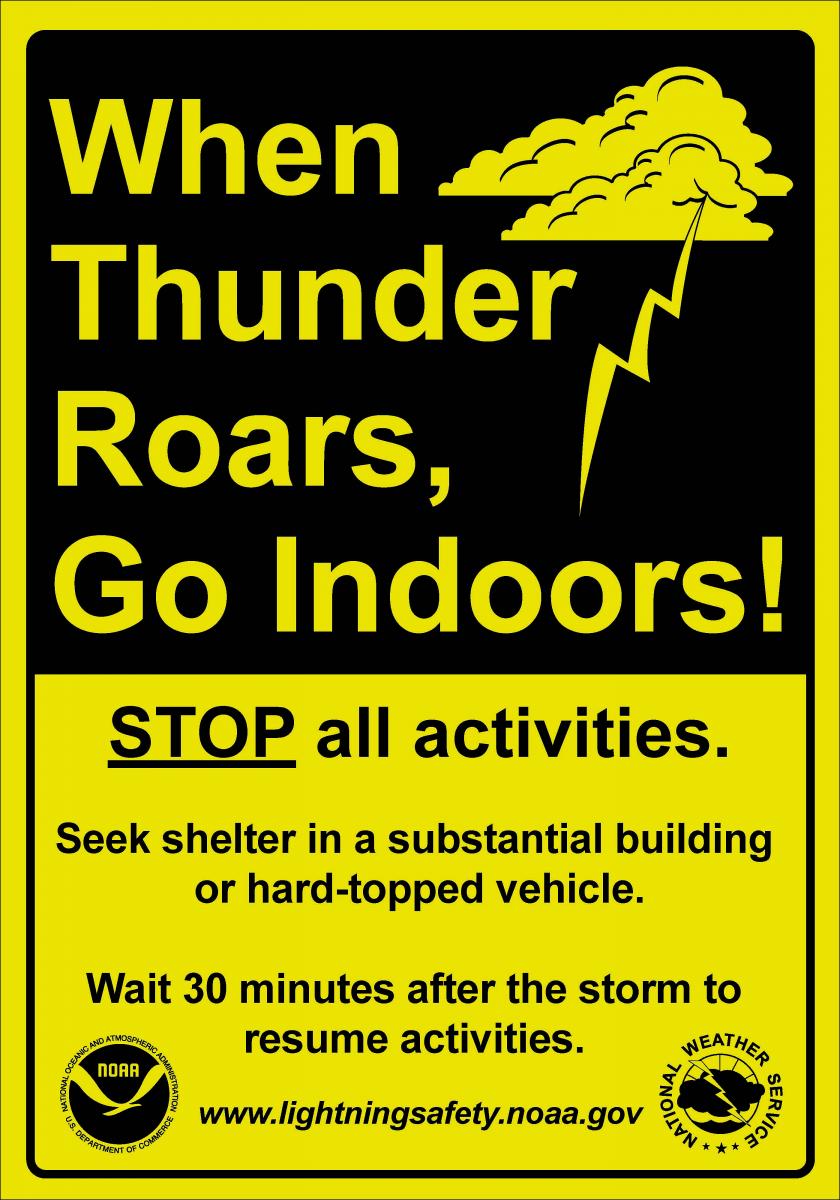 Rapid City, S.D. - In response to a number of recent lightning strike incidents in and around Rapid City coupled with an increase in lightning strike deaths nationally, the Rapid City Fire Department and National Weather Service would like to remind people "When thunder roars, go indoors".
Rapid City, S.D. - In response to a number of recent lightning strike incidents in and around Rapid City coupled with an increase in lightning strike deaths nationally, the Rapid City Fire Department and National Weather Service would like to remind people "When thunder roars, go indoors".
National Weather Service statistics on lightning strike deaths in the U.S. show the 27 fatalities through August 13 equal the total from all of last year. The ten-year average for lightning strike deaths in the U.S. through August 13 is 25. While the number for lightning strike deaths nationally in 2016 is slightly ahead of average, the number of deaths and injuries caused by lightning have decreased over the past decade. This decrease can be attributed, in large part, to increased awareness.
Lightning strike incidents appear to be on the rise, at least locally, over the past two weeks prompting a reminder from the National Weather Service and the Rapid City Fire Department to seek shelter when threatening weather approaches. On August 8, four separate incidents involving lightning strikes occurred in the Rapid City area. At around 6:30 pm, an individual was struck by lightning on Haines Avenue. That individual required emergency medical attention and was transported to Rapid City Regional Hospital. Minutes later, a second report of an individual struck by lightning was received. This individual was reportedly struck while working in the Rushmore Crossing area. That individual refused medical treatment. During the same storm, Rapid City and Box Elder fire departments each responded to separate reports of residences that had been struck by lightning.
This past Sunday evening, August 14, two separate reports of structures hit by lightning were received by the Rapid City Fire Department. One of those strikes is believed to have resulted in a fire.
The frequency of lightning strikes is due to an increase in number of storms in recent weeks, some containing very frequent lightning. Most of the storms have not reached severe criteria, so people may not be taking shelter and instead remain outside, putting themselves at risk of being struck.
Key points to remember in order to stay safe during lightning events include:
- There is no safe place outside during a thunderstorm.
-The best policy is to heed: "When thunder roars, go indoors".
-If you are close enough to see lightning or hear thunder, you are close enough to be struck and there is no way to accurately predict where lightning will strike.
- If you are outside, you need to get into a permanent structure or fully enclosed vehicle immediately.
-Once you are inside; stay away from windows, refrain from using electronic devices such as computers and televisions, and coming in contact with water through plumbing.
Also remember that once the storm passes, you should wait 30 minutes after the passage of the storm to resume outside activities as lightning can strike well beyond the storm.
For more information on lightning safety, please visit https://www.lightningsafety.